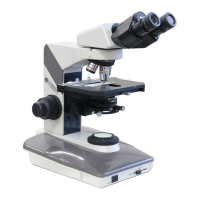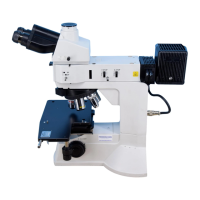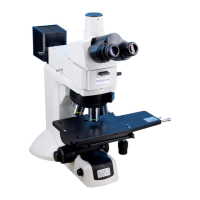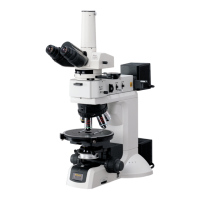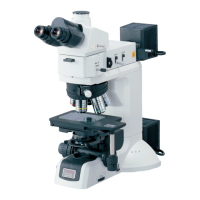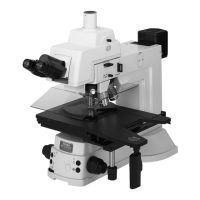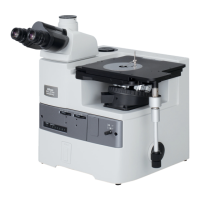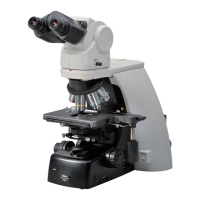3. Electrical
Failures
Causes
•
Actions
Lamp does not
• No electricity obtained
• Connect the cord to socket
light even
• No lamp bulb attached • Attaching
though
• Lamp bulb blown ) Replacement
switched ON
• Fuse blown
• Replacement
Unstable
• Input voltage not adjusted to
) Turn the change-over switch on
brightness of
house current voltage (for Europeanthe microscope bottom
illumination
districts only)
• House current voltage fluctuates
• Use transformer or the like
too much
(for adequate voltage)
Lamp bulb
• Not specified lamp bulb used
I Use 6V 20W specified lamp bulb:
promptly
(Halogen bulb: PH ILIPS 7388)
blown
• Too high voltage of house current
) Use transformer for adjustment
Insufficient
• Condenser not centered
) Centering (Refer to P. 10)
brightness of
• Condenser aperture too much c1osed---. Open it properly (Refer to P. 10)
illumination
• Too low position of condenser
• Correct positioning
(Refer to P. 10)
• Not specified lamp bulb used
• Use 6V 20W specified Halogen
bulb (PH ILIPS 7388)
• Dirt or dust on lens (condenser,
• Cleaning
objective, eyepiece, field lens, filter)
• Too low voltage
• Raise the voltage
Fuse blown
• Not specified fuse used ) Use 1A (250V) or O.5A (250V)
Flickering or
• Lamp bulb going to be blown
• Replacement
unstable
• Lamp bulb not inserted to the limit
• Secure connection
brightness of
• Fuse holder not firmly fastened
• Firm fastening
lamp bulb
• Irregular change of house current
• Use stabilizer
voltage
• Lamp bulb insufficiently inserted
• Positive connection
into the socket
4. Photom icrography
Failures
Causes
.· Actions
No sharp
• Improper focusing----. • Viewing into the finder and turning diopter ring,
picture
bring double crosshair into focus. Moving the eye
obtained
laterally, rotate fine focus knob, until no parallax
separation appears between the image and double
crosshair .
• At lower magnifications use focusing telescope in
addition.
23
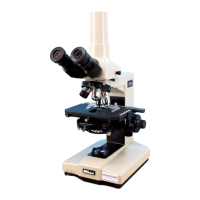
